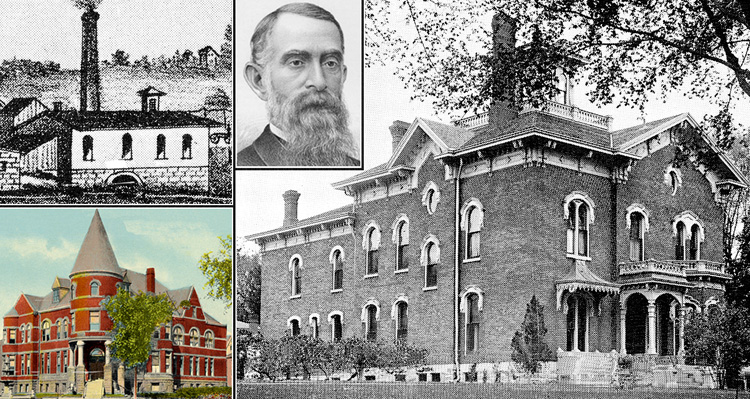
By
Bob Hibbs
The
Close family name elicits visions of triumphant economic success during 19th
century Iowa City, coupled with perhaps the greatest industrial tragedy in
county history.
Two
structures bespeak economic success – the existing Close mansion at 538 S.
Gilbert St. and the University of Iowa’s non-extant Close Hall. Tragedy
visited when the Close paper mill located at the dam in Coralville exploded on
July 23, 1875, killing six men.
An
irony: the now restored mansion served as the county orphanage for a decade
beginning during the 1930s, and served as the county welfare office from about
1949 through 1979, which included the congregate meals and senior center
programs during the 1970s. They now are housed in the former post office at 28
S. Linn St.
The
mansion’s last resident family was Hal & Emma Close Stewart during the
early 1920s. Hal and son Marc operated Stewart & Son shoes at 125 (later
121) E. Washington St., and later sold insurance. Acacia Fraternity bought the
mansion in 1923, but used it less than a decade before the county began
renting, then bought it in 1941.
The
county sold in 1980 to Charles Skaugstad Sr., who after restoration opened a
furniture sales and interior design studio. Art gallery showings now add flare
to the businesses. It cost $15,000 to build in 1874.
Brothers
Chalmer and M.T. Close arrived in Iowa City in 1854 while Old Capitol served
as the statehouse. During subsequent decades they partnered in several
manufacturing enterprises, including a highly successful linseed oil mill
opened in 1861 across Gilbert Street from the mansion. It employed as many as
30.
Chalmer
managed the linseed mill.
The
brothers also opened the first local ice house, started a candle factory in
1856 which they expanded two years later to supply lard and soap, as well as
opening the state’s first printing paper mill in 1866. Managed by M.S., it
employed as many as 50 workers, and provided extra income to farmers who had
little other use for straw.
The
mill was operated around the clock six days a week producing six tons of paper
daily. Disaster struck when a 6,000-pound chemical reducing tank located near
the center of the plant exploded, sending the tank so high in the air that a
witness said it appeared no larger than a barrel. It landed in the river.
The
plant was rebuilt and resumed production. The structure burned in 1899 while
in use by subsequent owner Iowa City Electric Light Co. Later fires also
consumed both the neighboring Pearl and Coral mills.
The
brothers were born in upstate New York of English-Scotch parents.
Contemporaries described them as honest, conscientious, whose word “was as
good as gold.”
Chalmer,
1832-1890, served as a city councilman in 1875, was a director of the
Burlington Northern Railroad, vice president of Johnson County Savings Bank,
and vice president of National Linseed Oil Co. of Chicago.
Older
brother M.T., 1829-1903, served as a council member during 1865 and 1871, and
on the school board. The brothers partnered in his name for three decades, but
by 1887, Chalmer had purchased the interests of his elder brother, and the
company name was changed to C.D. Close & Co.
Chalmer’s
widow Helen funded a $10,000 memorial at the University of Iowa toward
construction of a local YM/YWCA named Close Hall located on the northwest
quadrant of the Iowa Avenue intersection with Dubuque Street, a site now
serving Biology Annex.
The
Close name survives in Iowa City with seven Close families in today’s
telephone directory. Next
Saturday:
Slave sale, black girls kidnapped and John Brown escapes a mob, all in Iowa
City. Bob Hibbs collects local postcards and researches history related to them. |